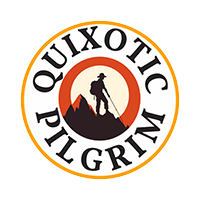Six years is a long gap between travel recommendations. After my 2016 stay in Porto, I wrote a post with my recommendations for the city that I’ve probably shared a few hundred times, but time and, I suspect, Covid, have led to some of those great spots closing down. Farewell, Moustache Cafe!
But as some places close, others emerge, and while I only had a few days in Porto this time, I can offer a few additional recommendations.
After a long delay, the iconic Mercado do Bolhão has reopened, and the space could not be better. While it’s got the clean lines and design of many European markets, mostof the vendors are those who made the place so special for so long. Instead of the experience at the trendy, crowded Time Out Market in Lisbon, the experience at the Mercado do Bolhão is centered around small producers, family shops, and excellent, local food. Apparently, the Portuguese government supported the market owners through Covid and the long construction, preserving the local feel. You can easily spend hours wandering through the stalls and sampling the local fare, from mushrooms to salted cod. If you want to find out just how good a canned sardine can be, be sure to stop at the Bolhão Wine House stall while you are at the market.
It’s probably fair to assume that most people go to Porto to experience the port wine, and while the waterfront is filled with a collection of really modern and hip-looking tasting rooms, you’re much better off going one street back and sampling in one of the smaller houses. Despite the array of options, my choice is clear: the Quevedo tasting room is a cozy, friendly space where your servers will take the time to explain the difference between the wines and make you feel welcome. For far less rush, far smaller crowds, and far less hard selling, make your way to Quevedo and support a smaller, family grower and producer.
After a long way of wandering up and down the hilly streets of Porto, you’re probably going to need a bit more refreshment, and you’re going to want to stop at Prova Wine, Food, and Pleasure for a selection of local wines from small producers. One of the best parts of the experience at Prova is the way your server will ask a few questions to determine a wine match. Combining intimate seating and large tables that invite communal conversation, Prova provides a great space to discover new wine and take a break from the city.
For a pastry break, Confeitaria Moura has been serving Porto since 1892–and for good reason. The limonete, a pastry with lemon curd and sugar glaze, was the real highlight. One special note about this place: as I was headed in, I noticed two young workers at the shop helping an older man in a wheelchair who seemed to be a regular. It wasn’t an easy task, but their generous spirit was a sweet moment before the treat of the desert.
One of the traditional foods you’re going to want to eat in Portugal is the bifana, a simple sandwich of a bread roll and pork cutlets marinated until they literally melt in your mouth. In Porto, Taxca is a simple, unassuming place that makes an excellent stop for a bifana and a glass of wine.
I also had a great dinner at Bar 41. While the menu wasn’t traditional Portuguese fare, the tapas-style dishes were playful and tasty. The tempura shrimp with passionfruit “caviar” was a highlight.
There is a reason there was a line outside Do Norte Cafe fifteen minutes before it opened. The portions are generous and the food is inventive. The hangover waffles were excellent, and I especially enjoyed the “special” black tea that came with apples and oranges steeping in the drink.
Finally, if you fall in love with Porto as hard as I have, you may just want to do as I have done and get a tattoo to mark your affection. Alice at Farol Tattoo was able to get me in on short notice and produce a wonderful memento to carry from the city.
The most important recommendation, though? Get yourself to Porto and wander around discovering your own favorites.




